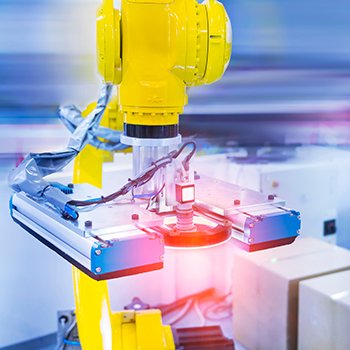เผยศักยภาพของเทคโนโลยีการตรวจสอบด้วยภาพในกระบวนการผลิตอาหาร Beyond the Naked Eyes: Unveiling the Power of Visual Inspection in Food Processing
1548 Views |

เผยศักยภาพของเทคโนโลยีการตรวจสอบด้วยภาพในกระบวนการผลิตอาหาร
Beyond the Naked Eyes: Unveiling the Power of Visual Inspection in Food Processing
By: กองบรรณาธิการ
นิตยสาร ฟู้ด โฟกัส ไทยแลนด์
Editorial Team
Food Focus Thailand Magazine
editor@foodfocusthailand.com
เจาะลึกขั้นตอนการควบคุมคุณภาพอาหารด้วยระบบ Machine vision
กระบวนการผลิตในปัจจุบันมีความซับซ้อนมากขึ้น ดังนั้น วิธีการตรวจสอบที่มีความแม่นยำ รวดเร็ว และมีประสิทธิภาพจึงเป็นสิ่งที่สำคัญสำหรับการควบคุมคุณภาพให้เป็นไปตามมาตรฐานที่สูงขึ้น
โดยระบบ Machine vision ประกอบด้วย 3 ส่วนที่สำคัญ ได้แก่ กล้อง แสง และคอมพิวเตอร์ โดยกล้องจะทำหน้าที่จับภาพ ขณะที่แสงสว่างจะช่วยควบคุมความคมชัดของภาพ ส่วนคอมพิวเตอร์จะใช้ในการวิเคราะห์ภาพที่ได้จากกล้องเพื่อตัดสินใจว่าจะสั่งให้เครื่องจักรดำเนินการอย่างไรต่อไป ดังนั้น เทคโนโลยีนี้จึงช่วยให้การประเมินคุณภาพของผลิตภัณฑ์อาหารมีความแม่นยำ ปลอดภัย และไม่ลดทอนคุณภาพของอาหาร ซึ่งถือเป็นสิ่งสำคัญอย่างยิ่งในอุตสาหกรรมการผลิตอาหาร
วิธีการเก็บภาพคุณภาพสูงที่ใช้ในอุตสาหกรรมอาหารสามารถทำได้หลายวิธี หนึ่งในนั้นคือการใช้เทคโนโลยีการถ่ายภาพไฮเปอร์สเปกตรัม (Hyperspectral imaging) โดยกล้องไฮเปอร์สเปกตรัมมีความพิเศษตรงที่สามารถเก็บข้อมูลได้มากกว่าที่ตามนุษย์มองเห็นและละเอียดกว่ากล้องถ่ายรูปทั่วไป โดยไม่เพียงแค่บันทึกสีสัน แต่ยังช่วยเก็บเอกลักษณ์เฉพาะของแสงแต่ละจุดในภาพได้
นอกจากนี้ยังมีเทคนิคการเก็บภาพเพื่อตรวจสอบผลิตภัณฑ์โดยไม่สัมผัสอาหารที่น่าสนใจอีกสองวิธี ได้แก่ การถ่ายภาพความร้อน (Thermal Imaging) และการสร้างภาพด้วยคลื่นสนามแม่เหล็ก (Magnetic Resonance Imaging; MRI) การถ่ายภาพความร้อน จะใช้พลังงานอินฟราเรด (ความร้อน) เพื่อสร้างภาพที่แสดงอุณหภูมิในแต่ละส่วนของอาหาร ซึ่งมีประโยชน์ในการติดตามกระบวนการผลิตอาหาร ส่วน MRI นั้น คล้ายกับการใช้ในขั้นตอนทางการแพทย์ โดยใช้สนามแม่เหล็กและคลื่นวิทยุเพื่อสร้างภาพโครงสร้างภายในของอาหารอย่างละเอียด
ขั้นตอนถัดไปคือการประมวลผลภาพที่ได้ ซึ่งเป็นการวิเคราะห์และใช้ภาพเพื่อคัดแยกหรือปรับปรุงคุณสมบัติเฉพาะบางประการ สามารถแบ่งได้เป็น 3 ระดับ คือ ระดับพื้นฐาน (ความสว่างและคอนทราสต์) ระดับกลาง (เน้นคุณสมบัติเฉพาะอย่าง) และระดับสูง (อาจมีการตีความภาพร่วมด้วย)
การประมวลผลภาพระดับพื้นฐาน เป็นการวิเคราะห์ภาพเบื้องต้นเพื่อกำจัดสิ่งที่ไม่เกี่ยวข้องออกจากภาพต้นฉบับที่ได้จากกล้องหรือเซนเซอร์โดยใช้เทคนิคทั่วไป
การประมวลผลภาพระดับกลาง เป็นการเจาะลึกเข้าไปในภาพเพื่อแยกวัตถุที่สนใจออกจากพื้นหลังอย่างแม่นยำ วิธีนี้มักใช้เทคนิคการแบ่งส่วนภาพ (Image segmentation) เช่น เทคนิควอเตอร์เชด (Watershed segmentation)
การประมวลผลภาพระดับสูง เปรียบเสมือนขั้นตอนสรุปผลการวิเคราะห์ในระบบ Machine vision วิธีนี้จะใช้สถิติหรือการเรียนรู้เชิงลึกในการจัดกลุ่มวัตถุที่สนใจเพื่อกำหนดขั้นตอนการประมวลผลต่อไป ซึ่งขั้นตอนนี้จะใช้อัลกอริทึมในการแบ่งจำแนกข้อมูลแบบต่างๆ
Exploring the stages of a machine vision system for food quality inspection
Given the increasing complexity of today’s production process, an accurate and efficient inspection method is essential to effectively and promptly meet higher quality standards.
Machine vision systems typically have three main parts: cameras, lighting, and a computer. The cameras capture the images, the lighting ensures good picture quality, and the computer analyzes the images to make decisions about what the machines do next. This technology allows for objective and non-destructive evaluation of food quality, which is crucial in the food processing industry.
In the realm of food processing, hyperspectral imaging is one of the methods used to acquire high-quality images. Hyperspectral cameras are like super-powered cameras which capture much more information than our eyes or regular cameras. They see not just colors but also the specific light signature of each tiny point in an image.
Other interesting techniques used for inspecting food without physically touching it are thermal imaging and magnetic resonance imaging (MRI). Thermal imaging uses infrared energy (heat) to create a visual image that shows the temperature of different parts of the food. It helps monitor cooking processes.Similar to the medical procedure, the MRI technique uses magnets and radio waves to create detailed images of food's internal structure.
Next is image processing, which involves analyzing and manipulating existing images to extract or enhance specific features. This process operates on three levels: low-level (basic adjustments like brightness and contrast), intermediate-level (focusing on specific features), and high-level (potentially involving some interpretation).
Low-level processing is the first step in image analysis, cleaning up imperfections from the raw image captured by cameras or sensors.
Intermediate processing in image analysis involves delving deeper into the image to separate the specific object of interest from the background clutter, a crucial step for accurate analysis. This separation is achieved using techniques like digital "image segmentation," such as watershed segmentation.
On the other hand, high-level processing represents the culmination of analysis in machine vision systems, where statistical methods or deep learning are employed to classify the object of interest, guiding subsequent processing steps. The food industry successfully uses various algorithms.






